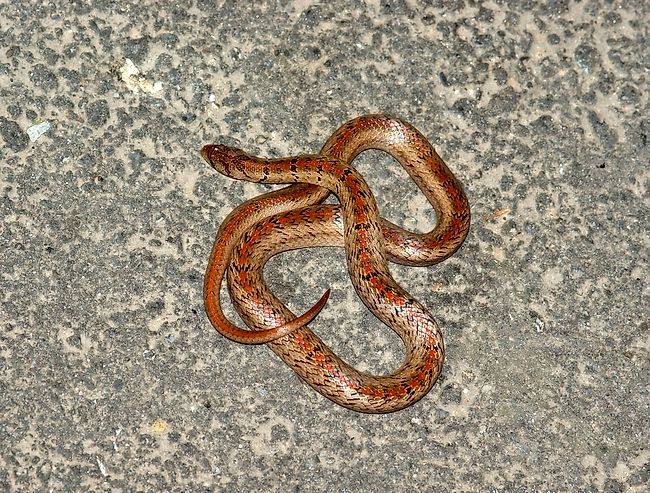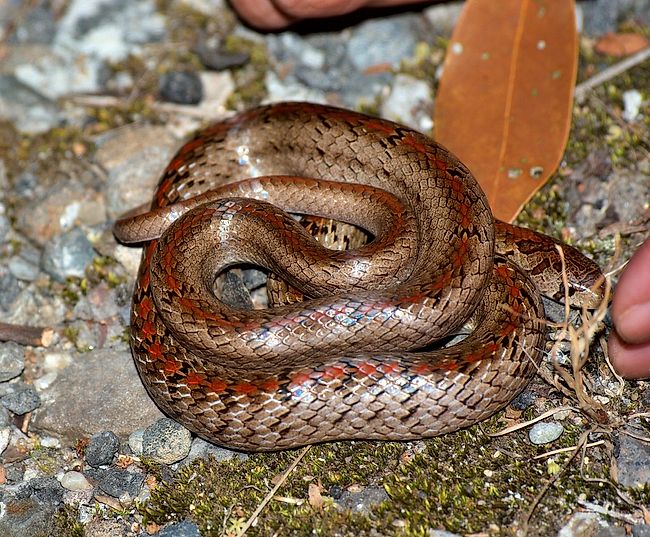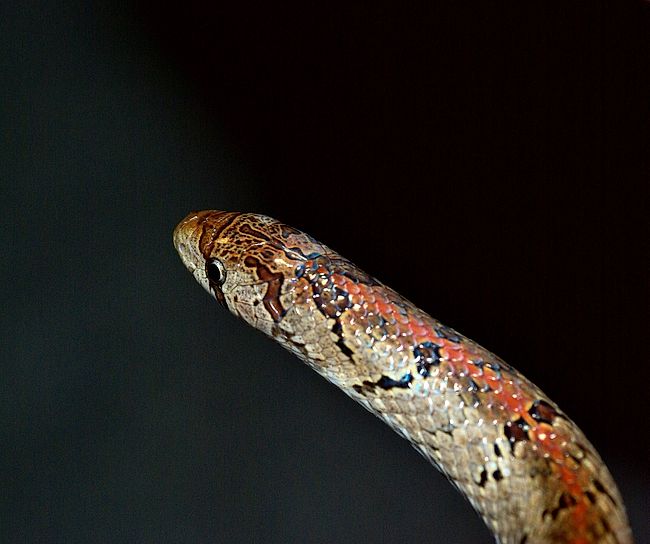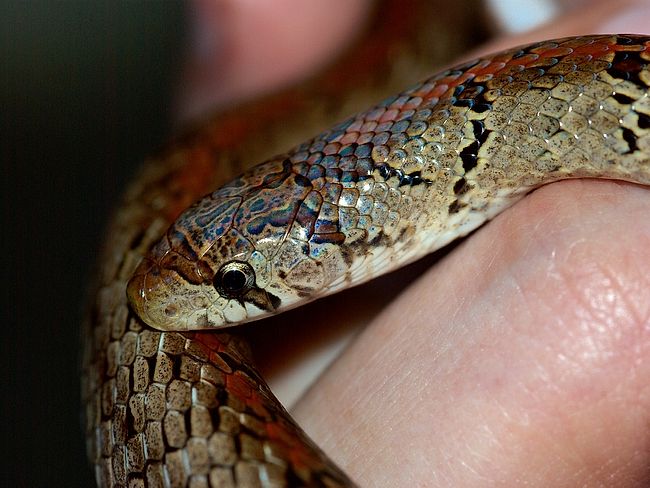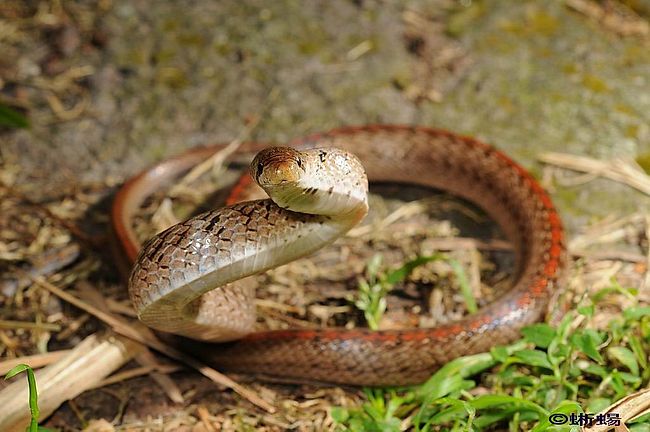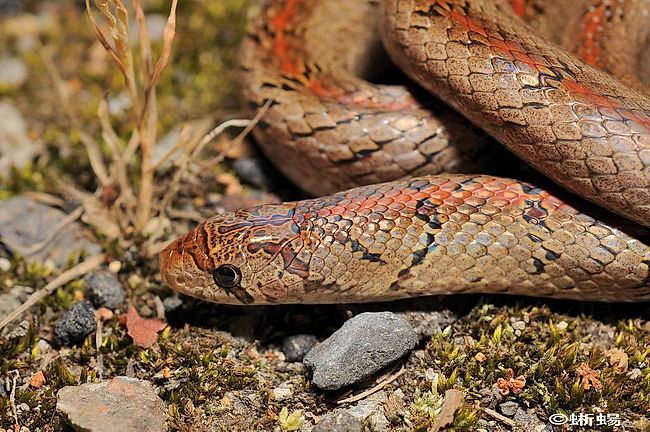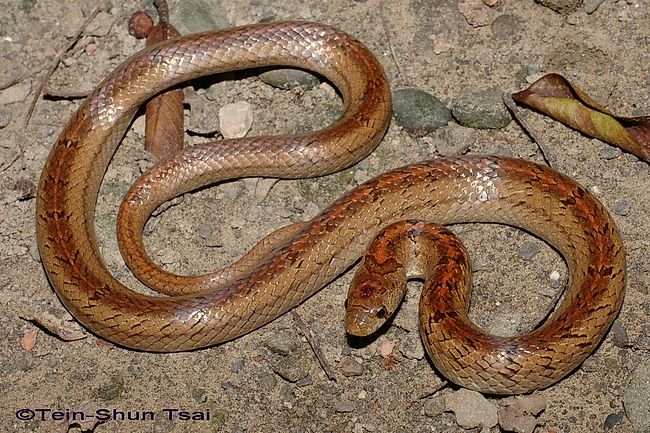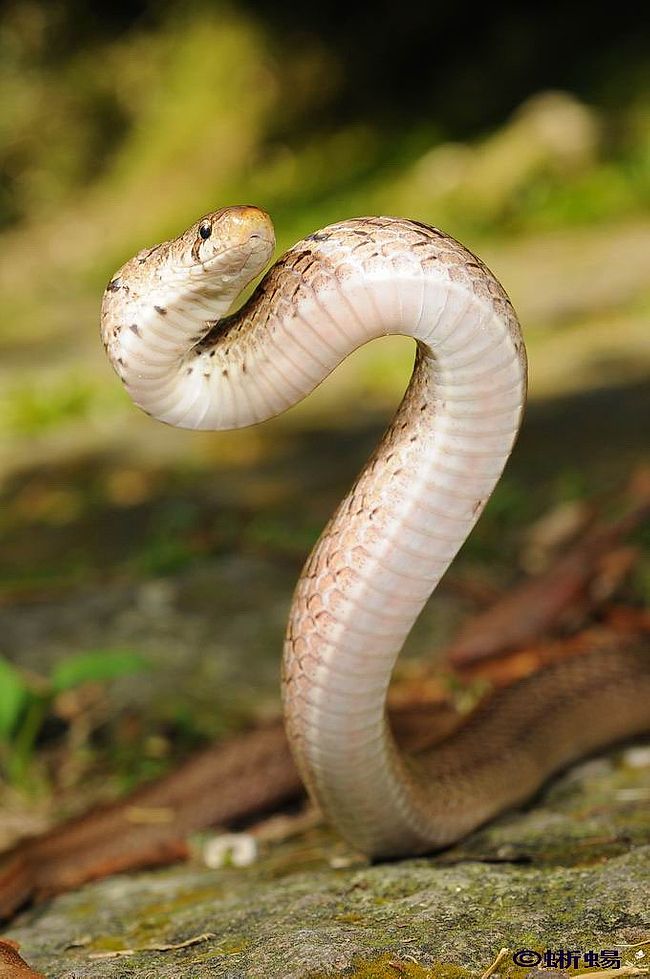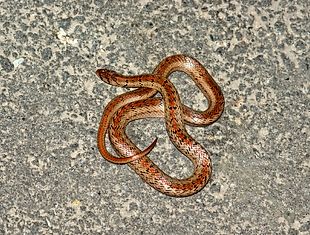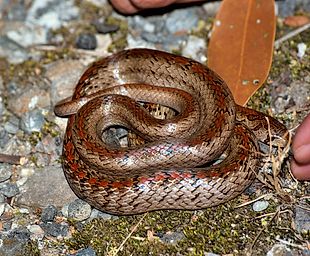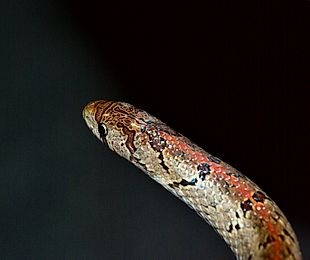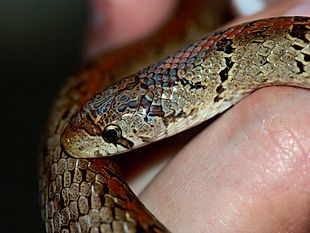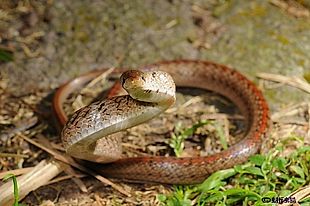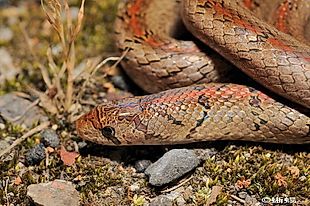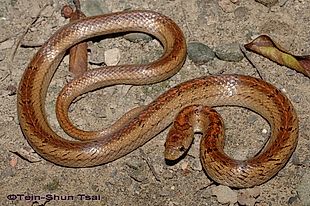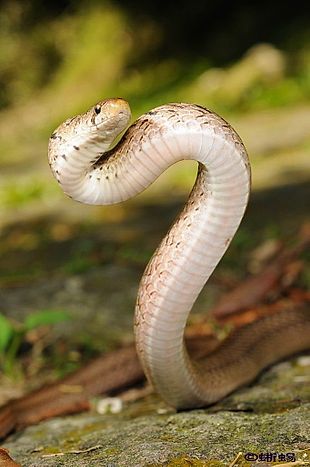Oligodon formosanus
Taiwan Kukri Snake
赤背松柏根 (chi4bei4song1bo2gen1)
Status: Not Protected
Non-venomous
Videos
Family
Colubridae, subfamily Lycodontinae
Max. length
95 cm
Occurrence in Taiwan
Throughout Taiwan and Orchid Island, up to 1000 m altitude.
Global Distribution
South China (Fujian, Guangdong, Guangxi, Jiangxi, Jiangsu, Guizhou, Hainan, Zhejiang), Taiwan, Vietnam.
Description
Small snake; total length up to 95 cm. There are 15-19 (19 at mid-body) rows of scales, which are smooth. It has a short, indistinct head bearing a large rostral shield; body is moderately stout and tail is medium stout. Eye is medium-sized; iris is dirty white to dappled gray with scattered black pigment and pupil is round, black, with narrow ring of cream to yellow. Tongue is flesh-colored, with fork tips darker than stem due to scattered black pigment. Upper head is gray brown mottled with symmetrical designs which include 1) a dark-brown stripe passing from the front of head, through eye, to the supralabial, 2) a less clear and discontinuous dark-brown stripe extending from outer margin of the parietal to base of jaw, with some median designs on the frontals, and 3) a forward pointing dark-brown chevron at back of head. The labials are lighter in color. Upper body is varied in color, including orange, brown, grey, and dark brown; there is a dark salmon, vermilion, or light-colored stripe along vertebral line where many faint to medium dark brown, irregular crosslines may be broken. Ventral head is white to light gray. Ventral body is light gray to pink with scattered irregular gray or medium brown gray designs varying in size; there are semicircular or pyramidal designs with base on posterior margin and in outer fields of ventral scales. Underside of tail is variable in color, frequently tinted with pink or salmon. Ventral body is pink in juveniles while the dorsal designs are less distinct. Anal scale is entire, and subcaudals are paired.
Biology & Ecology
This nocturnal rear-fanged (= opistoglyphous, see footnote (1)) snake inhabits mountainous regions and
lowland plantations. It preys almost exclusively on reptile eggs, occasionally including its own. The large,
laterally flattened posterior teeth in the upper jaw as well as the large rostral shield are adapted to cut open
and thrust into the eggs. Females produce 3-6 eggs per clutch in summer. Hatchlings measure about 13 cm in total
length.
"Snakes that specialize on the eggs of birds usually swallow eggs whole then crush them. Oligodon instead uses
enlarged, blade-like rear maxillary teeth to make repeated slashes in the leathery egg shell, inserts its head,
and swallows the yolk. The mechanics of cutting involve cycles of extreme displacement of the maxillary bone,
whose blade-like teeth are swung in arcs to make ever deeper slashes in the shell until a slit is formed. The
cycles during cutting involve protraction, engagement, and retraction of the palatomaxillary arch of one side
while the contralateral jaws maintain a continuous hold on the egg surface".
Kukri snakes derive their name from the above-mentioned blade-like teeth that resemble the famous kukri dagger
of Nepal's Gurkha soldiers. In defense, these teeth are used in a slashing manner which can cause gaping wounds
that may bleed freely, probably an effect of the snake's saliva which is rumored to possess anticoagulant qualities.
When disturbed and threatened, Oligodon formosanus may put on quite a few theatrics, including open display of its hemipenes, as well as tail coiling and thrashing.
Etymology
Kukri snakes derive their name from their blade-like teeth that resemble the kukri dagger
of Nepal's Gurkha soldiers.
Oligodon: oligos is Greek for "few, scanty"; odont means "tooth"; referring to the low number of teeth in the upper jaw.
formosanus is Latin for "from Formosa (Taiwan)".
The Chinese name 赤背松柏根 (chi4bei4song1bo2gen1) means "Red-backed (赤背) Pine Root (松柏根)".
Further Info








